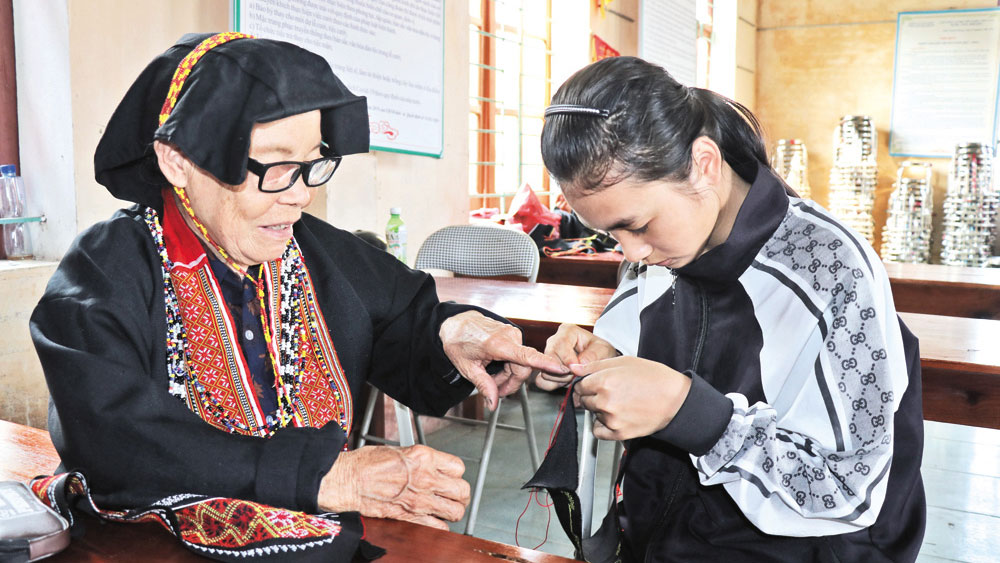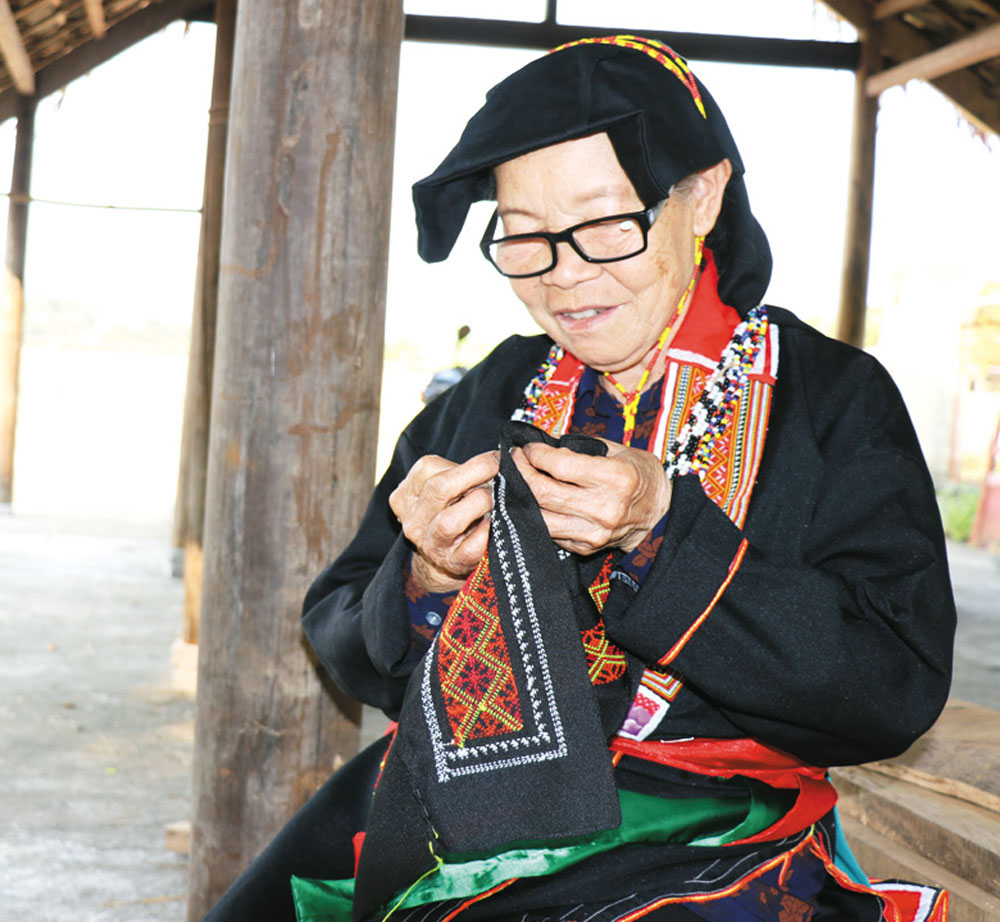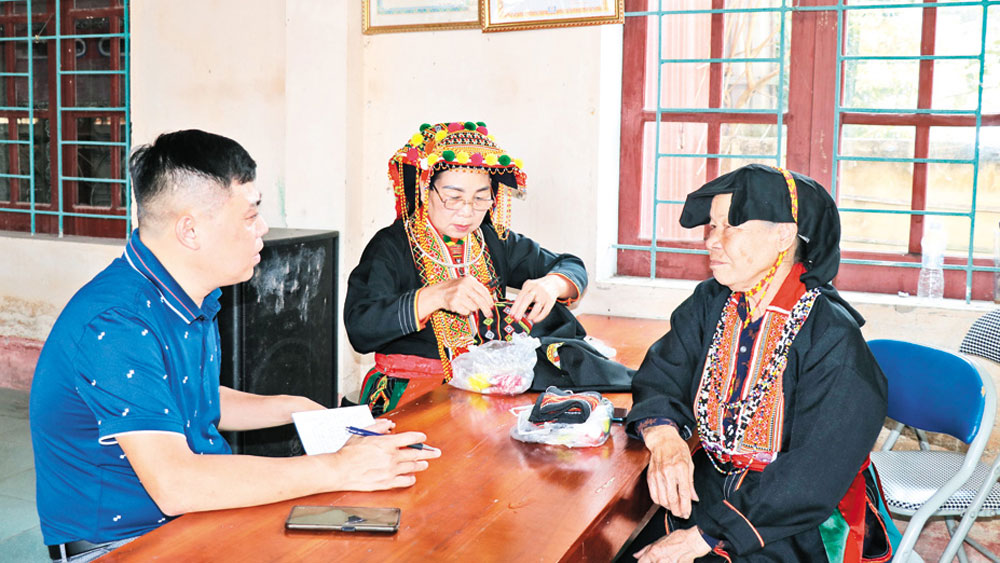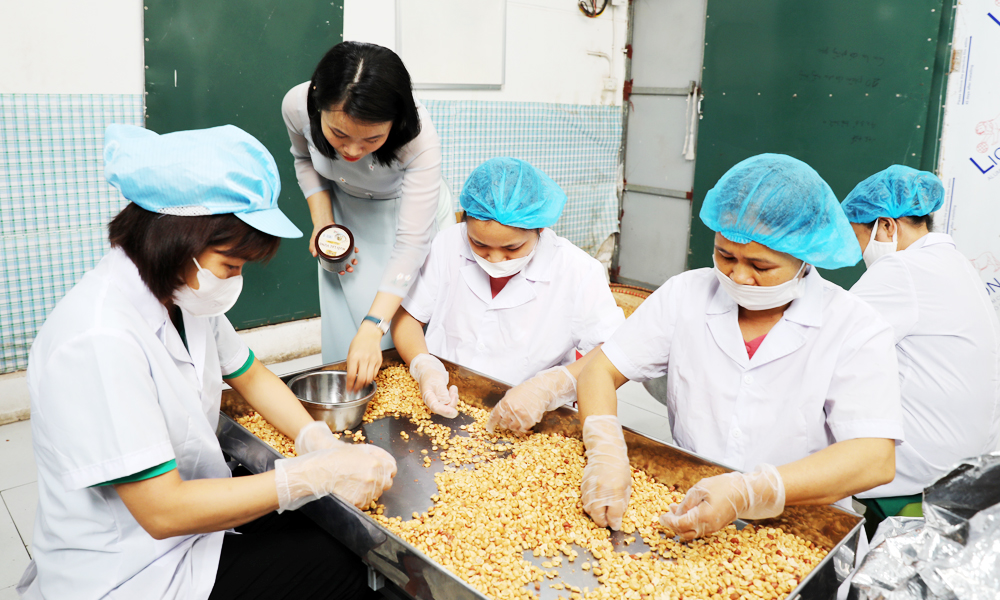“Keeping the fire” of traditional embroidery
On a weekend afternoon, together with officials of the township People's Committee, we were present at the cultural house of Thanh Chung residential area. Here, Binh and some old women in traditional costumes of the Dao ethnic group were meticulously embroidering patterns on costumes.
 |
|
Members of traditional embroidering teaching club share experience. |
Seeing the guests, Binh stopped embroidering and invited us into the culture house. She said: “Every weekend afternoon, we are present at the cultural house to exchange experience and discuss the unfinished costumes, and teach the younger how to embroider traditional clothes".
She said embroidery is associated with the life of the Dao ethnic group, especially women. This is considered the "soul and bones" that contribute to creating the typical identity of the Dao ethnic people, expressing their lifestyle, way of thinking and beliefs. According to the ancient custom, before getting married, Dao girls have to embroider their wedding dresses as well as those for their mother-in-law as a gift.
 |
|
Ban Thi Binh teaches the traditional embroidery craft to the youth. |
"After someone proposes to marry her, a Dao girl will be given a two-month leave from farming work by her parents to prepare for the wedding day," said Binh.
According to her, each product is like a cultural picture of the Dao people with harmony and sophistication in patterns, textures and colors. The costumes of the Dao people are often in red, yellow and green because the Dao women want them to be a highlight amid the green colors of the mountains and forests.
 |
|
Chairwoman of the Women's Union of Son Dong district Ban Thi Binh.
|
Pointing to the patterns of an unfinished product, Binh said that these do not follow pre-drawn patterns but are transmitted orally and kept by memory. Most of the motifs and patterns are derived from and associated with daily life and working activities, expressing the beliefs, customs, practices and farming methods of the Dao.
For example, the image of a pair of birds on the hem of the shirt represents the desire for peace and freedom. Watermelon seeds demonstrate the efforts of the Dao people to overcome difficulties like Mai An Tiem in the fairy tales. Or the terraced fields and the harrow show the spirit of labor, while eggs and gerberas express the desire for a weather life.
The patterns are also divided into different types, including those for everyday wear and those for the shaman's or bridal wear.
Sharing about her wholehearted efforts in "keeping the fire" of embroidery, Binh said that in the past it was not difficult to see the image of graceful Dao women in traditional costumes, but today only on holidays and Lunar New Year (Tet), they wear traditional costumes. There was a time people who know how to embroider traditional costumes were counted on the fingers of one hand.
 |
|
Chairwoman of the Women's Union of Son Dong district Ban Thi Binh tells reporters about the traditional embroidery of the Dao ethnic group. |
In addition, the hustle and bustle of today's life and better economic conditions have made people in the hamlet gradually replace traditional products with modern clothes. Young people are no longer enthusiastic about embroidery.
In order to impart the craft to the young, in 2012, Binh and some elderly people in the hamlet established a club to teach embroidery free of charge. On weekends and summer holidays, members of the club go to each family to persuade children to learn the traditional craft.
According to statistics, since 2012, Binh and the elderly in the residential group have taught traditional embroidery skills for 125 women and girls, more than 10 of them now can embroider a traditional costume for themselves.
 Bắc giang
Bắc giang
















Reader's comments (0)